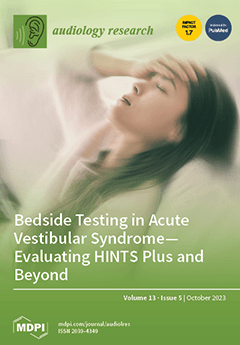Background: Severe truncal ataxia associated with an inability to sit up without assistance (STA grade 3) is frequent in patients with central acute vestibular syndrome (AVS) involving the brainstem or cerebellum. When these patients have nystagmus, central HINTS excludes peripheral lesions; however, additional localization and lateralization signs are helpful, not only to resolve the peripheral versus central vestibular lesion dilemma, but to zero in on a precise lesion localization/lateralization to the lateral medulla, the most common ischemic lesion localization associated with an initially false-negative stroke MRI.
Methods: This is a study of AVS patients with additional inclusion criteria: grades 2 or 3 ataxia with an eventual diagnosis of medullary stroke (MS), either involving the lateral medulla (LMS) or the medial medulla (MMS), and horizontal (h) gaze paralysis was the main exclusion criteria. All patients sat on the side of the bed or stretcher, with assistance if needed. A general neurologic examination followed in the sitting position, the testing protocol included the head impulse, spontaneous nystagmus, and skew deviation (HINTS) tests, followed by observation of the effect of brief 3–5 sec eyelid closure on ocular position, and saccade and pursuit eye movement tests. If they could sit, the protocol included the ability to stand with a wide base, then a narrow base, the Romberg test, and tandem gait. Radiographic lesion localization and horizontal gaze deviation concluded the protocol.
Results: A total of 34 patients met the entry criteria, 34 MS (13 in the lateral medulla, 12 previously described, and 1 new patient), and 1 new MMS. Among them,
n = 10/12 had grade 3 ataxia, and 3 (1 new patient) had grade 2 ataxia. In addition, overt ocular laterodeviation (OLD) was present in thirteen of them (35.3%). All OLD patients had gaze deviation and ipsilateral saccade and truncal lateropulsion, 1 medial medulla stroke patient had grade 3 truncal contrapulsion and contralateral hemiparesis without OLD, n = 20/21 patients with LMS without OLD had grade 3 truncal ataxia, and 1 had grade 2 truncal ataxia.
Discussion: AVS patients with severe truncal ataxia (inability to sit without assistance) potentially have brainstem, cerebellum, or subcortical lesions. All patients had central HINTS; however, simultaneous direction-concordant STA 3 and OLD provided greater lateral medulla localization specificity, affecting the ipsilateral medulla. Future work to explore a practical posterior circulation stroke scale that includes HINTS, STA, and OLD will potentially select cases for thrombolysis even in the event of initially false-negative imaging.
Full article






